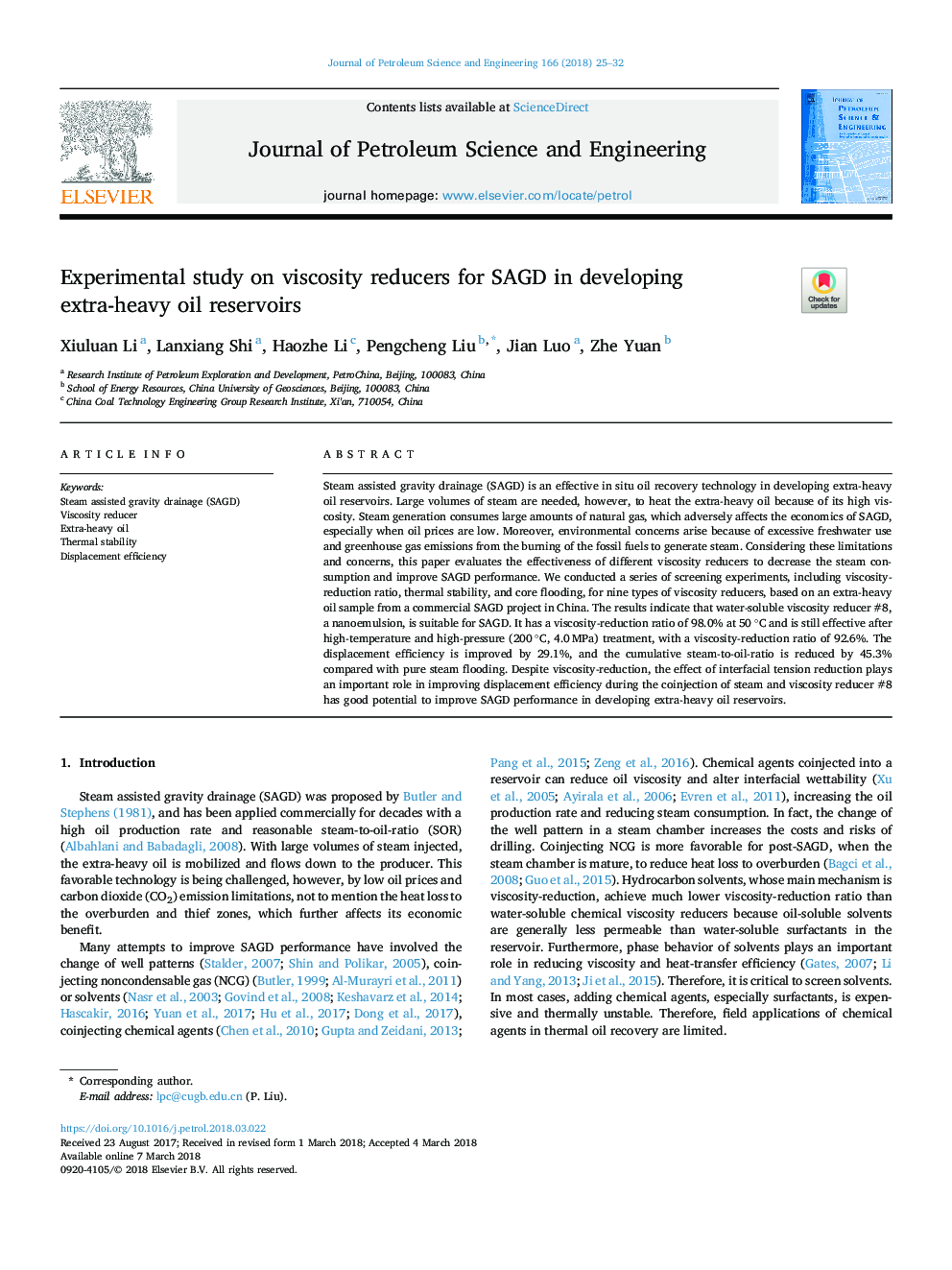| Article ID | Journal | Published Year | Pages | File Type |
|---|---|---|---|---|
| 8124832 | Journal of Petroleum Science and Engineering | 2018 | 8 Pages |
Abstract
Steam assisted gravity drainage (SAGD) is an effective in situ oil recovery technology in developing extra-heavy oil reservoirs. Large volumes of steam are needed, however, to heat the extra-heavy oil because of its high viscosity. Steam generation consumes large amounts of natural gas, which adversely affects the economics of SAGD, especially when oil prices are low. Moreover, environmental concerns arise because of excessive freshwater use and greenhouse gas emissions from the burning of the fossil fuels to generate steam. Considering these limitations and concerns, this paper evaluates the effectiveness of different viscosity reducers to decrease the steam consumption and improve SAGD performance. We conducted a series of screening experiments, including viscosity-reduction ratio, thermal stability, and core flooding, for nine types of viscosity reducers, based on an extra-heavy oil sample from a commercial SAGD project in China. The results indicate that water-soluble viscosity reducer #8, a nanoemulsion, is suitable for SAGD. It has a viscosity-reduction ratio of 98.0% at 50â¯Â°C and is still effective after high-temperature and high-pressure (200â¯Â°C, 4.0â¯MPa) treatment, with a viscosity-reduction ratio of 92.6%. The displacement efficiency is improved by 29.1%, and the cumulative steam-to-oil-ratio is reduced by 45.3% compared with pure steam flooding. Despite viscosity-reduction, the effect of interfacial tension reduction plays an important role in improving displacement efficiency during the coinjection of steam and viscosity reducer #8 has good potential to improve SAGD performance in developing extra-heavy oil reservoirs.
Keywords
Related Topics
Physical Sciences and Engineering
Earth and Planetary Sciences
Economic Geology
Authors
Xiuluan Li, Lanxiang Shi, Haozhe Li, Pengcheng Liu, Jian Luo, Zhe Yuan,
